
You won’t want to hear this, but there is absolutely no guarantee that you will see the Northern Lights at any given time of the year. Like many occurences in our miraculous world, they reflect the fact that nature is truly unpredictable with a mind of its own. However, there are plenty of ways that you can heighten your chances by planning your trips in accordance with expert guidance and scientifically observed trends. Where possible, you should give yourself plenty of time to patiently wait for the right opportunity. Here is your ultimate introduction to the lights, mapping out all of the information that you need to know.
The beautiful, vibrant lights of the aurora occur when electrically charged particles from the sun collide upon entry into the earth’s atmosphere. While they’re typically seen closer to the South and North poles, these wonders of the world can actually be seen from impressive distances away.
The Northern Lights are known as ‘Aurora Borealis’, while those in the South will find ‘Aurora Australis’. The former means “dawn of the north”, while the latter means “dawn of the south”. In Roman mythology, Aurora was the goddess of the dawn. Many other cultures have legends about these lights as well, and many indigenous people worldwide believe that they point to spirits, either of the animals they have hunted, or the spirits of their own people.
The stunning colours that we observe are as a result of the colliding gas particles that are released from the sun’s atmosphere. They can appear red, yellow, blue or violet, but most commonly they are a rather yellowish green, or even pink. The yellow hues are caused by oxygen molecules around 60 miles above the earth, while the rarer red auroras are caused by high-altitude oxygen, as many as 200 miles high into the sky! If you see blues or purples, that’s typically nitrogen at work. Auroral displays can also take on many forms, from scattered clouds to shooting rays. Regardless of the colours you see, no two nights are the same, making for a unique and breathtaking experience regardless, and more than worth seeing again and again.
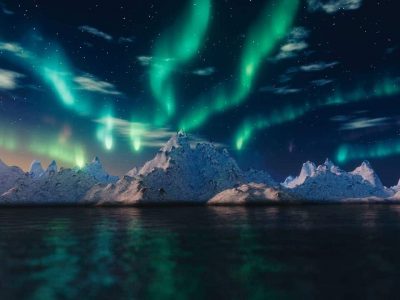
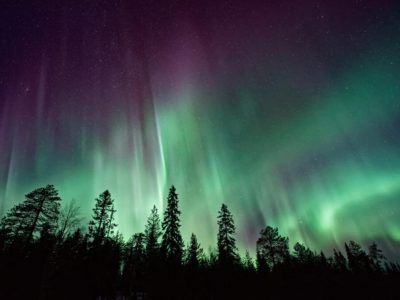
The Arctic region of the world consists of the likes of Iceland, Norway, Finland, Russia, Alaska and Canada, alongside a few other countries and areas. The Arctic is the region most typically associated with travel expeditions to witness the Northern Lights. However, you may be surprised to hear that the Northern Lights have been seen everywhere from New Orleans to Scotland, but you definitely should not count on this.
Each destination is amazing in its own right, and you should not be too disappointed if you cannot see the lights themselves. Iceland is an increasingly popular destination, known for its dramatic landscapes, hot springs and lagoons. It is also one of the best places to see the Northern Lights and the number of visitors in recent years reflects this. However, Scandinavian countries also offer ample opportunities and equally beautiful topography, as do the northernmost regions of Canada and Alaska. You can get creative; for example by taking a cruise throughout the regions. Alternatively, some hotels are even see-through, giving you the best views of the stars (and hopefully more).
In general, you should aim to be as far from big cities as possible because there is less unnatural light pollution, which can dilute the Northern Lights. Where possible, be willing and prepared to venture further north at any time to chase them.
The Northern Lights are incredibly famous, but that doesn’t stop them from getting stage fright, as we have seen! Because they are created by colliding particles from the sun, it makes sense that they’re heavily influenced by its activity as well.
The sun actually goes through cycles of approximately eleven years, during which there are times of “solar maximum” and “solar minimum”. For those dreaming of seeing the lights in 2019, we are unfortunately in the midst of a solar minimum, but truly, anything is possible.
It’s not all doom and gloom, and as it were, there may be light at the end of the tunnel! This is because during a period of solar minimum, the lights themselves can actually be far more predictable. There’s a lot of science to it, but you can use patterns to predict whether the lights will shine or not, based on the sun’s rotations, taking around 27 days. So, if there was an amazing display 27 days ago, there’s a good chance there will be an amazing one today!
To heighten your chances of seeing the lights this year, you can plan by month. We have broken it down accordingly… just don’t forget your camera.
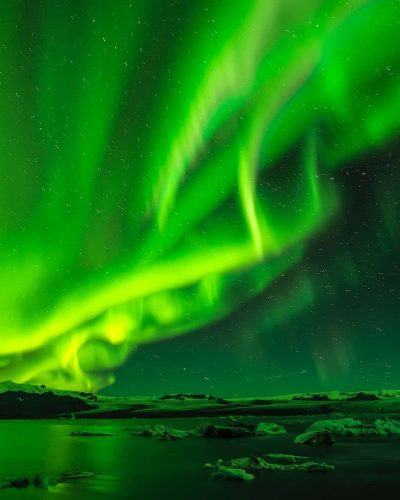
These three months at the beginning of any given year are often the best to experience the most worthwhile aurora hunting. The long, dark nights typically associated with the countries where they are most prevalent make for the best conditions, with plenty of opportunity to see something. Plus, there’s lots of snow during the few hours of daylight that you do have, so you can enjoy a true winter wonderland!
It’s a very cold time of year, often far below freezing, particularly in January. However, if you can tolerate such temperatures, we do recommend going at this time, because it’s said that the cold make the lights more visible. Equally as eerie as it is ethereal, you will be enthralled regardless.
By February, the weather is improving somewhat, and as the days get somewhat longer in March, so too do the temperatures rise. Thanks to the snow, there are fewer clouds in the sky to obscure the lights that are created.
Late March is a brilliant time to go – the spring equinox is rumoured to be fantastic for solar activity, you’ll have more time to do things in the day and you won’t put yourself at risk of hypothermia!
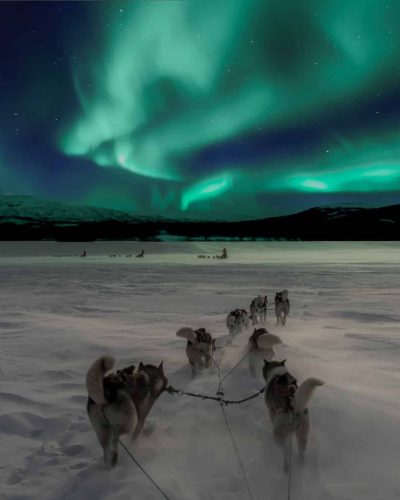
Unfortunately, the late spring and early summer months aren’t ideal for seeing the Northern Lights. This is because there are just so many hours of sunlight during the day. In fact, in Iceland and some other areas, the sun does not set throughout June and there is perpetual sunlight 24 hours a day. This is a natural phenomenon in itself, but unfortunately not the one you’re probably looking for!
On the bright side, there is plenty to do in these regions for intrepid travellers, such as bear watching, whale watching and plenty of self-drive adventures. The bizarre feeling of being out in the sun around the clock to enjoy them should not be overlooked, particularly thanks to the picturesque landscapes that will surround you. It is fair to say that many people will never experience this in their lifetime.
However, you should not pin your hopes and dreams on seeing the Northern Lights at all during this time. When there is too much light they are only visible through special scientific equipment, as the skies just aren’t dark enough.
September and October see the nights slowly beginning to draw longer and longer again, although there are still many pleasant hours of sunlight to enjoy as well. If you’re adverse to colder weather, this is the perfect time to attempt a Northern Lights sighting.
The sights you see can be particularly enchanting because the lakes and rivers have not yet frozen over with ice. This means that if you’re lucky enough to see the aurora, you may even see the reflections in the bodies of water, making the experience doubly as breathtaking.
Change happens quickly in the Arctic region, and just as sure as one day you will be basking in sunlight, the next may bring major snowfall and increasingly darker nights. Clouds are more prevalent, which affects visibility, but the dark actually does your chances many favours.
At this magical time of year, there are opportunities in abundance to witness the Northern Lights in all of their glory, but it is also a time of year to be revered for its associations with Christmas, or even the Pagan solstice celebrations.
This is a great time to venture out in an attempt to see them with children. There is plenty to keep them occupied while you wait patiently, from visits to Lapland to see Santa Claus, to reindeer sleigh rides and dog sledding. The kaleidoscopic colours of the Aurora Borealis will only add to the unforgettable memories.
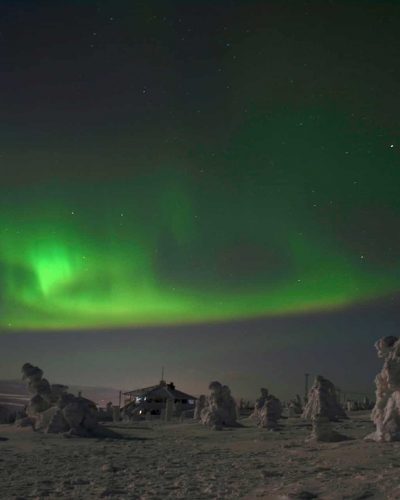

SIGN UP